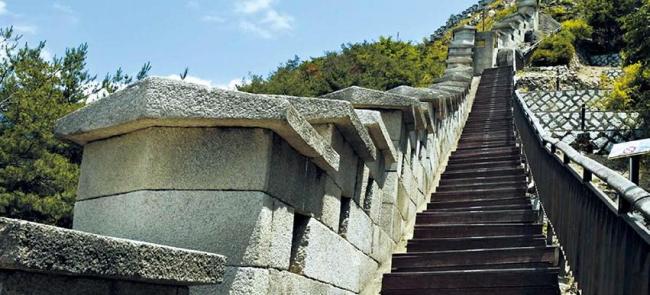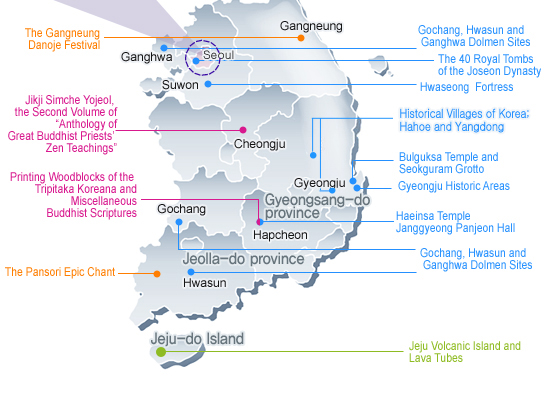 | | ▲Seoul City Wall (Yonhap News) |
|
The year 2013 will be crucial for the management of cultural heritage as the central and local administrations prepare to add their cultural assets to the UNESCO World Heritage List.
Currently, nine examples of Korean tangible heritage are on the UNESCO World Heritage list along with 14 intangible items, deemed worthy of protection for the whole world to enjoy. Another 15 sit on the tentative list awaiting designation within two years.
“Heritage is our legacy from the past, what we live with today, and what we pass on to future generations. Our cultural and natural heritage are both irreplaceable, sources of life and inspiration. UNESCO seeks to encourage the identification, protection and preservation of cultural and natural heritage around the world considered to be of outstanding value to humanity,” UNESCO says on its website. Cultural heritage on the list should represent a masterpiece of human creative genius; exhibit an important interchange of human values; bear a unique or at least exceptional testimony to a cultural tradition or to a civilization which is living or has disappeared, or to others that claim the asset to be unique to their way of life.
Listed items receive financial or technical support from the World Heritage Fund.
More local governments are planning to promote their properties to the world through the list.
“Inclusion on the UNESCO list is very important for the country as well as the local community,” said Professor Lee Sang-hae of Sungkyunkwan University. Lee, who heads the advisory group at the Cultural Heritage Administration that screens properties for submission to UNESCO, said that the enlistment is a great publicity opportunity for the local authorities and for local residents. It’s a chance to start a fresh campaign to preserve cultural assets. People can also expect economic benefits such as a boost in tourism to the area, he said.
For example, the number of tourists visiting the villages of Hahoe and Yandong in North Gyeongsang Province, which were listed for their preservation of the Confucian culture of the early Joseon (1392-1910) period, marked 770,000 in 2011, right after the designation was confirmed. The figure is expected to have exceeded 1 million by the end of 2012.
The bureau responsible for the village maintenance said that more than 197,000 visited the site after the news of its inclusion on the list.
“The tourists have been an economic boon to nearby areas. The Andong Hanjichon producing traditional paper; ‘hanwoo,’ or Korean beef, restaurants are seeing a flood of visitors while other neighboring tourist attractions are also seeing an increase of guests by around 20 percent,” the authorities said in a press release.
“It seems very natural that UNESCO World Heritage List could be another stepping stone for local tourism,” Lee said. | 




